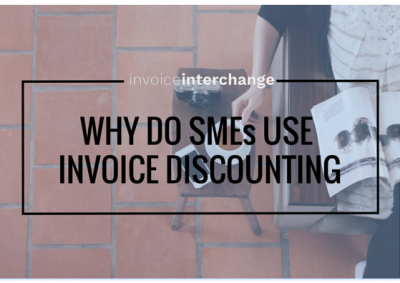
Why do SMEs use Invoice Discounting?
Use Invoice Discounting – Overview
Invoice discounting is a totally different financial instrument to other facilities. Here are some of the reasons why modern day SMEs use invoice discounting over other financing facilities.
1. Total control over costs
In invoice discounting SMEs have total control of the cost of finance as they themselves set the invoice discounting fees. With this advantage they are able to adjust appropriately the selling price to their customers in order to cover the funding costs when they use invoice discounting.
2. Able to negotiate better prices
SMEs will be in a better position to negotiate prices with their suppliers when they use invoice discounting as they are now able to make payments earlier. This in turns improve their relationship and strengthens the supply chain.
3. Able to take on new sales / projects
Many SMEs are often faced with a dilemma when there is a new order / project, as with any new initiative it will inevitably require substantial upfront cash. Invoice discounting takes away this concern, knowing that they can turn their outstanding invoices into cash at any point in time to fund their operations as well as the new order/ project.
4. Total control of when to finance
SMEs are in total control and can tailor the timing and duration of the additional invoice financing to suit its need. Thus they need not incur any fees for financing that is not needed. This is because once the SME has been approved through the on-board processing (process takes a few days) the actual selling of the invoices is very swift (within hours) compared to weeks and weeks of application processing for a bank loan.
5. Adjusted funding when use invoice discounting
SMEs are able to adjust the funding requirements accordingly to meet their needs. There is no restriction and they can seek to raise a small amount or large amount. For example, as the company grows, SMEs will need more working capital to fund new sales/projects. Invoice discounting allows the SMEs to sell a high value invoice or a basket of invoices to cater for the large amount required. On the other hand, if it is a slow business month and only small funding is required, SMEs can then sell a low value invoice or lesser number of invoices.
Invoice financing is flexible and nimble compared to an overdraft facility, the latter is usually quite inadequate and limited which always leaves the SMEs still wanting. Loan is also rigid as it is a fixed amount over the loan life time.
Related Articles

The Working Capital Challenge: How Long Credit Terms Could Be Holding Your Business Back

Understanding the Impact of Chinese New Year on Cash Flow: A Guide for SMEs
